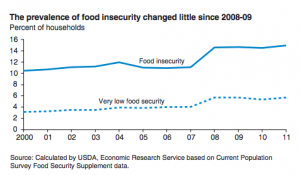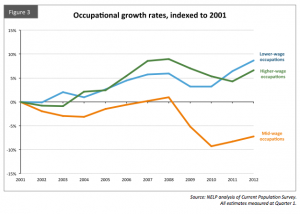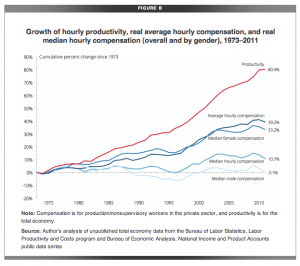Mitt’s DOES Have a View of Workers
While I’m happy that Paul Krugman is observing the same thing I did here–that Republicans don’t care much about workers–I disagree with his observation that Mitt said nothing about workers in his RNC speech.
Lest you think that this was just a personal slip, consider Mr. Romney’s acceptance speech at the Republican National Convention. What did he have to say about American workers? Actually, nothing: the words “worker” or “workers” never passed his lips.
Sure, he didn’t actually utter the word “worker,” but I maintain that this passage was the most telling of his entire RNC speech.
But today, four years from the excitement of the last election, for the first time, the majority of Americans now doubt that our children will have a better future.
It is not what we were promised.
[snip]
It’s not just what we wanted. It’s not just what we expected.
It’s what Americans deserved.
You deserved it because during these years, you worked harder than ever before. You deserved it because when it cost more to fill up your car, you cut out movie nights and put in longer hours. Or when you lost that job that paid $22.50 an hour with benefits, you took two jobs at 9 bucks an hour and fewer benefits. You did it because your family depended on you. You did it because you’re an American and you don’t quit. You did it because it was what you had to do.
But driving home late from that second job, or standing there watching the gas pump hit 50 dollars and still going, when the realtor told you that to sell your house you’d have to take a big loss, in those moments you knew that this just wasn’t right.
But what could you do? Except work harder, do with less, try to stay optimistic. Hug your kids a little longer; maybe spend a little more time praying that tomorrow would be a better day. [my emphasis]
As I’ve noted, it’s telling because Mitt has bragged about creating those $9 jobs–the ones he admits you can’t live off of. And it’s telling because of the solution Mitt offers to people working dead-end jobs: pray, and trust that Mitt, as President, will make it better.
We now know that would involve trusting Mitt to do something for a bunch of people he believes don’t work hard, even while he admits they’re working two jobs to pay the bills.
A fundamental part of Mitt’s election message is that Obama is responsible for the real and perceived decline in the American lifestyle that has been in decline for decades. He claims he will fix that.
But when you put all the things he believes together, it’s clear he believes he will fix it by badgering people he admits are struggling under two jobs to work harder.
It doesn’t make sense: the real answer has more to do with Mitt’s own faults, with his own method of getting rich. But that’s why it’s important to note Mitt’s contradictory understanding of real workers.




